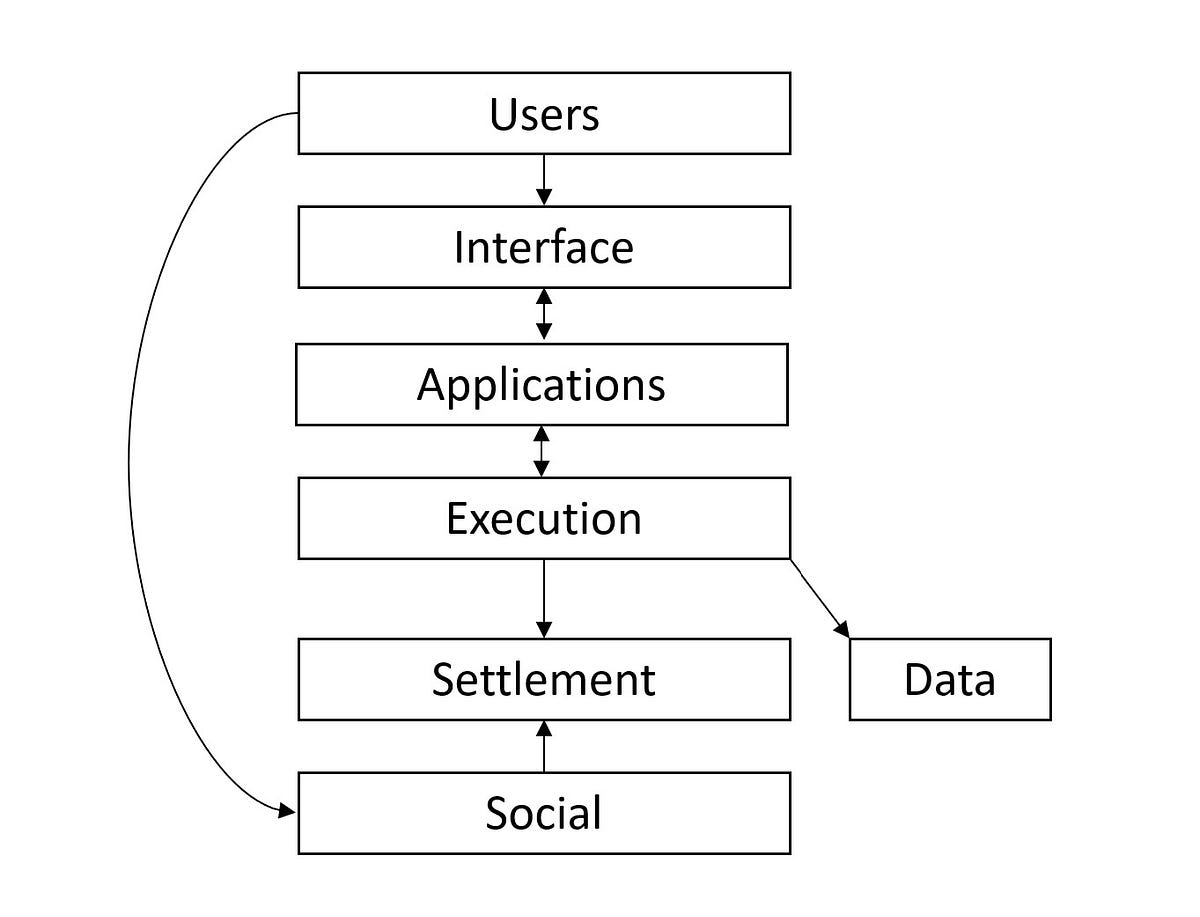

Please note that this is my semi-informed opinion, and only one possible outcome on how web3 plays out.
A lot of web3 skeptics are quick to criticize the terrible UX. Even web3 advocates have often conceded that UX may not be as good, but we’ll make up for it with the nice properties enabled by decentralization. Turns out, all of the building blocks for better UX than web2 already exists, and in this post, I’ll attempt to put it all together to give a clearer vision of one possible outcome where web3 out-UXs web2.
The web3 stack — oversimplified
Well, that seems complicated even in its oversimplified form. But the end user will only need to care about applications & interfaces — which is no different to how web2 works.
There’ll be a wide variety of interfaces available to users. Think of these as the new “operating systems” or “browsers” for web3.
My preferred solution is a social recovery smart contract wallet like Argent. Social recovery offers superior UX to web2 recovery. Managing passwords is a chore, and if you forget your password you’re now relying on a centralized bank or web2 company to recover it for you — a process that’s often tedious and could take weeks. With social recovery, you don’t need to manage any passwords. If you lose access to your account, you simply need your friends, family or trusted entities to recover it quickly. But there’ll obviously be centralized interfaces as well.
The social recovery will be at the heart of it, but eventually, these wallets will be more like browsers and app stores as well. People will find the applications they want to use, and use it. Two key pieces to this puzzle are account abstraction & pooling techniques. This will enable seamless UX. Fees, blockchains, bridges — all of that will be abstracted from the user entirely. The interface will smartly do all of that under-the-hood.
Of course, there could be a “Simple Mode” where the user does not even have to select applications, but rather just use cases. For example, someone just wants to earn interest on their savings. They’ll just deposit their fiat, and earn interest, and that’s it. They may have no idea whatsoever what Aave, StarkNet or Ethereum are — yet they’ll be indirectly using these solutions.
There’ll also be application-specific web2-like scenarios. Indeed, these are already here. For example, you just deposit fiat to Sorare, and play their fantasy sports game exactly like you would a web2 fantasy sports game. The user has no idea that the NFTs are being minted on Sorare’s rollup, or that it’s settled on Ethereum.
Of course, there’s a lot more to this — but you get the picture. With account abstraction, seamless bridging, pooling, social recovery and validity rollups, we have all the underlying building blocks to enable elegant UX. There’ll be strong competition to deliver an interface with the best UX.
Ultimately — it’s all about applications. This is a critical requirement to users adopt web3 — better user experiences than web2, and ones that were simply not possible without web3. Everything depends on the innovations by application developers. I believe thus far the industry has been far too obsessed about blockchains and tokens, but I hope over time this is where all the activity, capital & innovation shift to.
The applications will live on execution layers, and the interface with interact with execution layers directly. I expect rollups & volitions to be the premiere execution layers where 90+% of all activity happens, but we could also have centralized, hybrid and sovereign monolithic chains. With a volition setup, we could have a hybrid scenario.
Let’s take Facebook, for example. Their Libra/Diem project was crippled by regulatory issues — the data liability problem. Worldcoin and Reddit have been smarter — choosing to build rollups, with zero data liability. So, by settling all data on a public credibly neutral layer, they are not answerable to regulators the same way Facebook was. With the Meta announcement, it’s clear they are building their own execution layers. But Meta is never going to build a rollup, right? What they could do instead is build something like a hybrid volition. Most of it is centralized database, but they choose to settle specific transactions on a public settlement/DA layer — to get interoperability and limit data liability. In a world of blockchain legos and modular blockchains, there are plenty of possibilities.